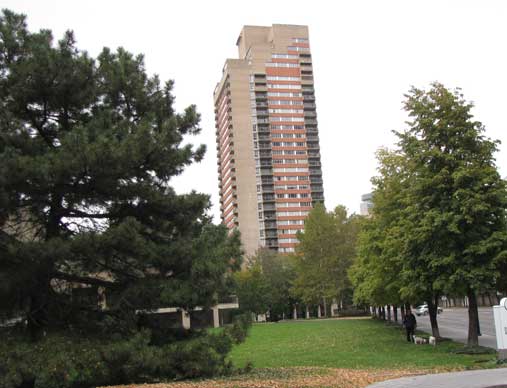
At the San Francisco Towers this summer, huge flocks of starlings were a regular site on the roofs and lawns each evening. No one really understands why they came, or why they left suddenly last week. But they’ve likely moved south for the winter, and its anyone’s guess whether they’ll return next year
Sweaters are appearing, trees are turning and European starlings have moved south from Midtown.
Until last week, thousands of them had gathered each evening for months at the San Francisco Towers condominiums at 25th Street and Grand Avenue.
Other bunches regularly raided Midtown bird feeders or descended in rasping swarms to devour any pet food left outside.
Now they are heading south in swirling groups in what is called murmuration, when hundreds of thousands of them cloud the sky.
Those clouds can devour tons of potatoes, fruit or much else. They also carry diseases and bully native species. Not even eagles dare to fly into them.
In 1960, thousands of starlings themselves flew into an airplane engine as it took off in Boston and caused a crash that killed 62 people.
Blame it all on an erratic drug manufacturer who wanted to bring every bird species mentioned by Shakespeare to the United States.
In 1890, he brought 60 starlings from England to New York City’s Central Park and released 40 more the next year.
A New York Times article a century later tells what happened:
The birds at first “inspired jubilation” but then they spread, and spread, adapting to climates from Alaska to Florida. They seemed to breed with abandon, eat anything and they prompted an ornithologist to write, “Starlings do nothing in moderation.”

Photo courtesy Creative Commons photographed by David Corby
Joe DeBold, a biologist at the Missouri Department of Conservation in Midtown, said they often hang out together “to look big” and discourage predators, a strategy that has worked well for them.
The Shakespeare passage that led to all this was a brief mention in Henry IV: “The King forbade my tongue to speak of Mortimer. But I will find him when he is asleep, and in his ear I’ll holler, ‘Mortimer!” Nay, I’ll have a starling shall be taught to speak nothing but Mortimer, and give it to him to keep his anger still in motion.”
DeBold said that starlings do mimic sounds but not nearly as well as parrots.
Others note that starlings’ antics and changing colors can make them attractive, not to mention the power of their numbers in an evolved social structure.
Florence Webb, a resident of San Francisco Towers, said she had never seen so many before in the five years she has lived there.
“They were something to behold,” she said. “They came before sunset and stayed in the trees and on the roof; the roof was just black with birds.”
You could set a watch by their arrival at about 7 p.m., she said. “I miss them, I really do.”



Who’s talking